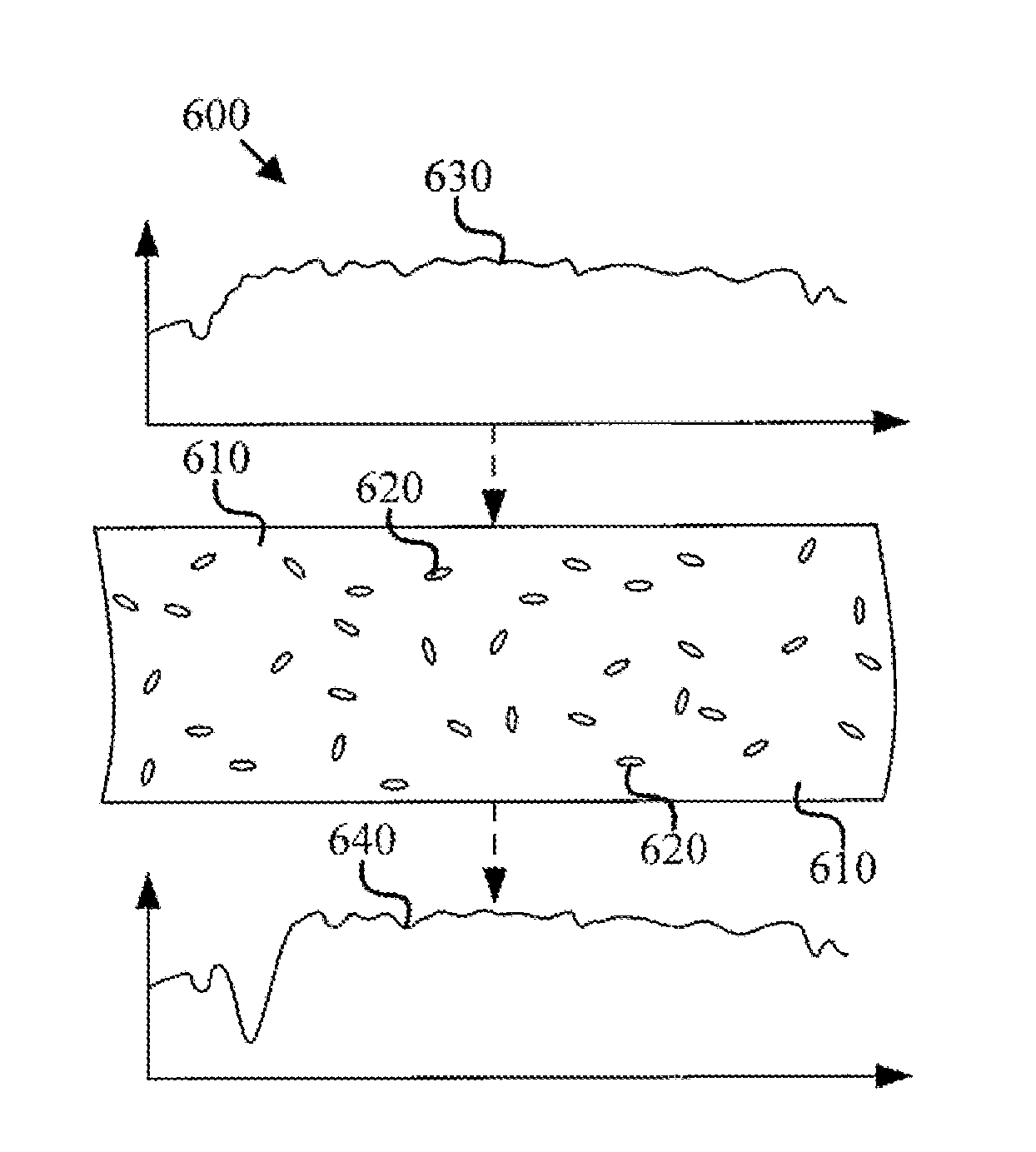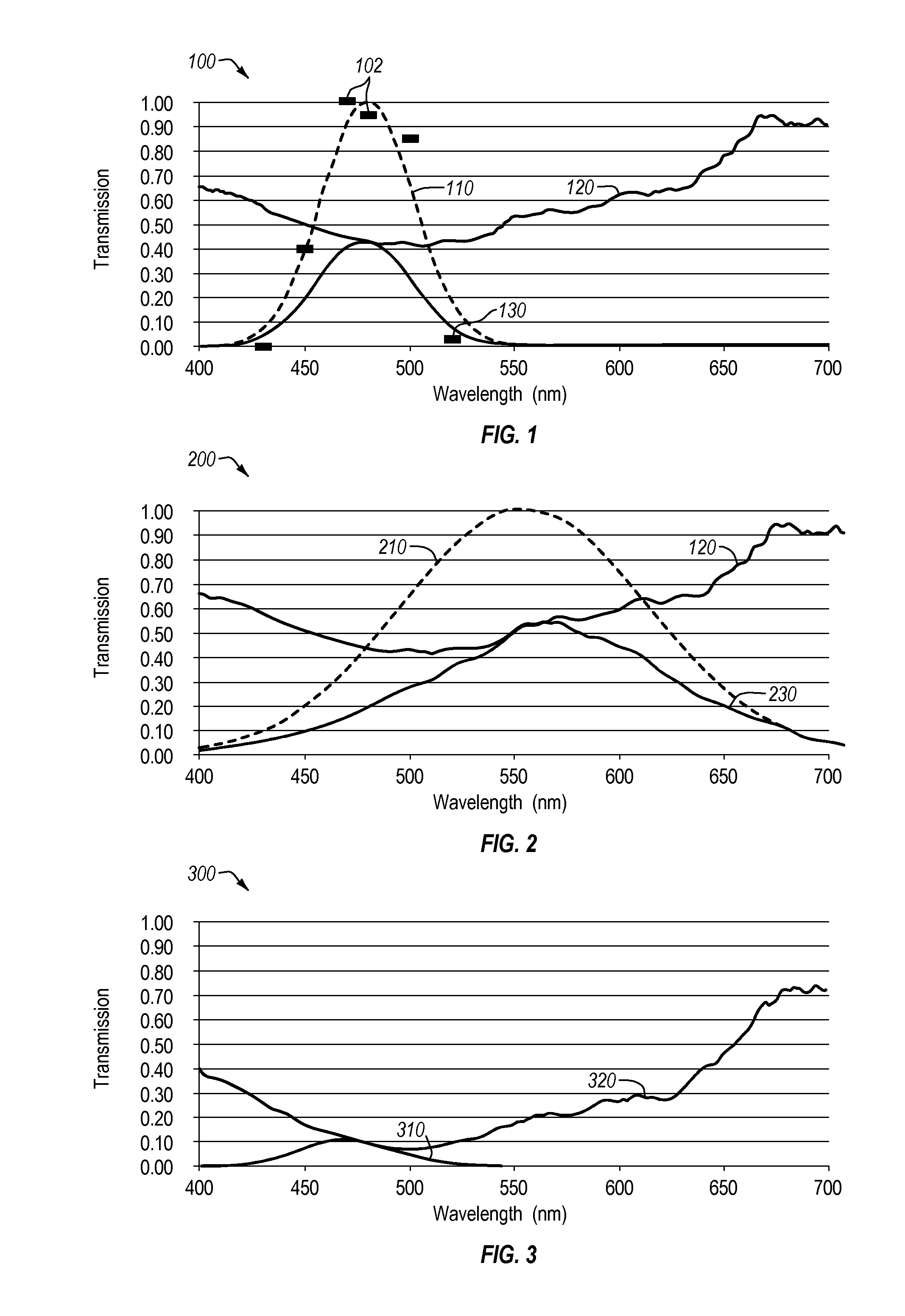Nanoparticle light filtering method and apparatus
a technology of nanoparticles and filters, applied in the field of optical filtration, can solve the problems of affecting vision, affecting the accuracy affecting the quality of light filtering results, so as to reduce the frequency and/or severity of photophobic responses
- Summary
- Abstract
- Description
- Claims
- Application Information
AI Technical Summary
Benefits of technology
Problems solved by technology
Method used
Image
Examples
Embodiment Construction
[0034]One or more implementations of the present invention relate to the production of lenses, filters, other devices, or methods of blocking, attenuating, filtering or otherwise regulating the particular wavelengths of light that reach the human eye. In particular, the present invention is primarily concerned with the attenuation of neuroactive wavelengths that affect the melanopsin-containing ganglion cells in the retina of the eye. The melanopsin-containing ganglion cells are also known as the intrinsically photoreceptive Retinal Ganglion Cells, or ipRGCs and form the top layer of photoreceptive cells in the retina. When neuroactive wavelengths interact with the ipRGCs, transmissions are sent to a number of locations in the brain, aside from the image-processing centers. Included amongst those are the pain centers in the thalamus and the circadian rhythm control center in the suprachiasmatic nucleus, a collection of neurons in the brain's midline. The present invention is particu...
PUM
| Property | Measurement | Unit |
|---|---|---|
| full width half maximum | aaaaa | aaaaa |
| thickness | aaaaa | aaaaa |
| refractive index | aaaaa | aaaaa |
Abstract
Description
Claims
Application Information
 Login to View More
Login to View More - R&D
- Intellectual Property
- Life Sciences
- Materials
- Tech Scout
- Unparalleled Data Quality
- Higher Quality Content
- 60% Fewer Hallucinations
Browse by: Latest US Patents, China's latest patents, Technical Efficacy Thesaurus, Application Domain, Technology Topic, Popular Technical Reports.
© 2025 PatSnap. All rights reserved.Legal|Privacy policy|Modern Slavery Act Transparency Statement|Sitemap|About US| Contact US: help@patsnap.com



